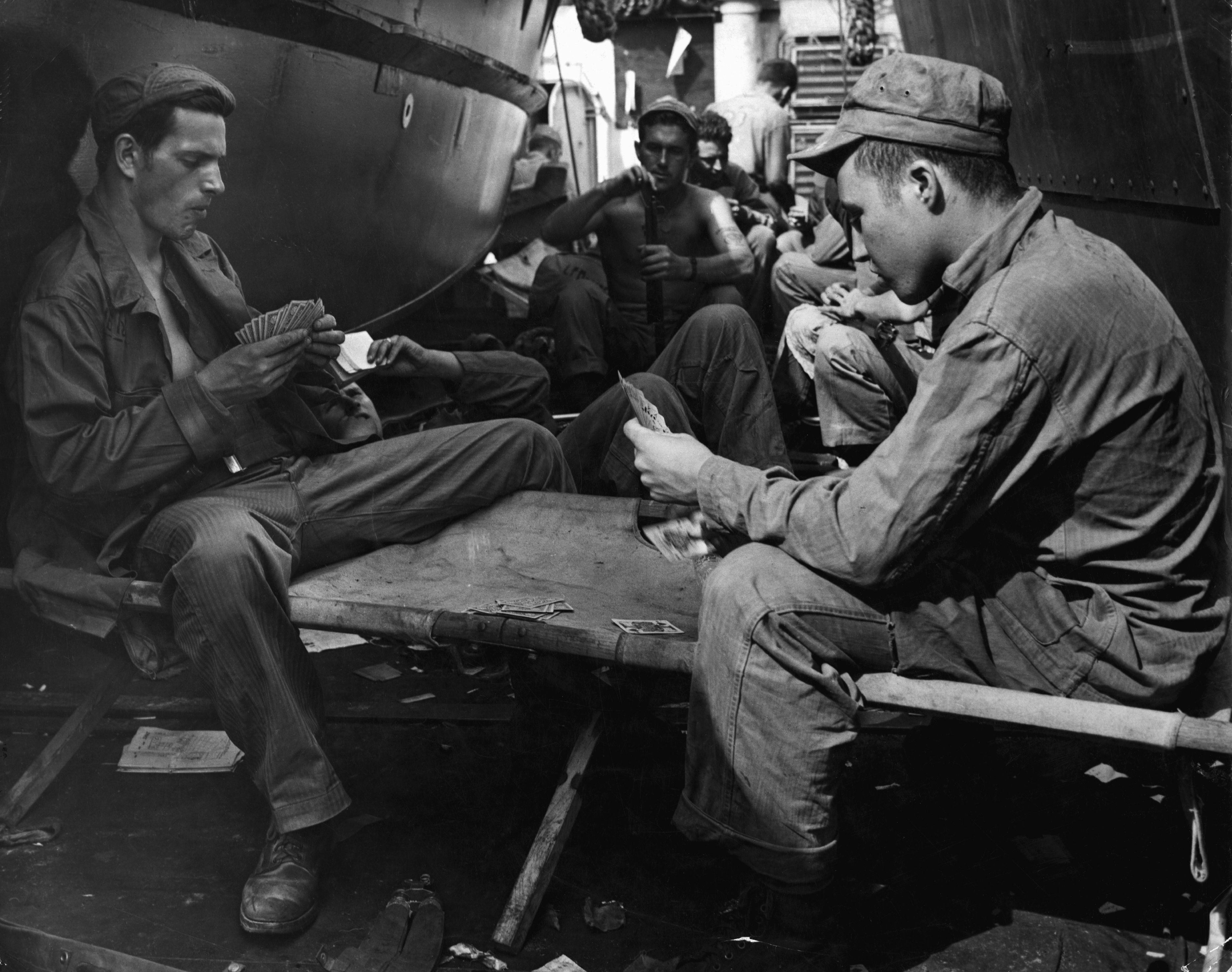Hint: It wasn’t just for relaxation.
Playing cards are ubiquitous among troops in combat zones. They are easy to carry and a great way to pass down time. As it turns out, they are also a great way to disseminate information. For some, they were a great way to deliver a message.
Here are four ways:
1. Escape Map Cards
During World War II, American intelligence agencies were keen to help Allied POWs escape from German prison camps. To do this, they teamed up with the United States Playing Card Company to create what became known as Map Decks. These special decks of cards looked just like a regular deck; however, when the cards were wet the POWs were able to peel them apart, revealing a portion of a map. When this was done to the entire deck a map could be constructed, revealing secret escape routes.
In order to get these cards into the hands of the POWs in Germany, they then teamed up with the Red Cross to have these special decks slipped into the special deliveries going to Allied POWs for Christmas in 1944.
It is believed that 32 POWs were able to escape Colditz Castle using the cards, and, by war’s end, the cards inspired over 300 escape attempts.
2. Aircraft Spotter Cards
In World War II it was important for Allied soldiers to be able to identify both friendly and enemy aircraft. To do so, the U.S. military distributed playing cards with silhouettes and the names of the aircraft so troops would be exposed to the relevant information while playing cards. While not as exciting as other special decks on this list, the cards proved useful in helping Allied servicemen make proper identifications.
3. Ace of Spades Decks
In Vietnam, American servicemen once again called on the United States Playing Card Company to create a special deck of cards for them. This time, though, the deck was not informative; rather, it was to be used for psychological warfare. Four lieutenants, Charles Brown, Barrie E. Zais, Thomas R. Wissinger, and a Lieutenant Davis serving in Vietnam, wrote to the card company with a special request – decks of cards containing nothing but the Ace of Spades. It became a calling card for Charlie Company, leaving it it along trails, entrances and exits to villages, and on the bodies of Viet Cong fighters. Soon the idea spread to other American units in Vietnam, becoming the “symbol of Death.” Lt. Brown would later write to U.S. Representative Craig Hosmer stating, “I cannot give an account of the effectiveness of our campaign. I will say that once we swept through the area, leave our cards, and then return some weeks later, there has been little or no VC activity there. You can arrive at your own conclusions.”
4. Iraqi Most Wanted Deck
Shortly after the U.S-led invasion of Iraq in 2003, these specially created decks began circulating among U.S. troops to help them identify key individuals within the Iraqi regime. Aces were reserved for the most prominent individuals – Saddam Hussein, his two sons Uday and Qusay, and Abid Hamid Mahmod, Saddam’s right-hand man – while those lower-tiered individuals received a lower number card.
And in 2004, playing cards were created as an educational tool for troops, highlighting the cultural treasures of Afghanistan, Iraq and Egypt and how to recognize and protect them.





